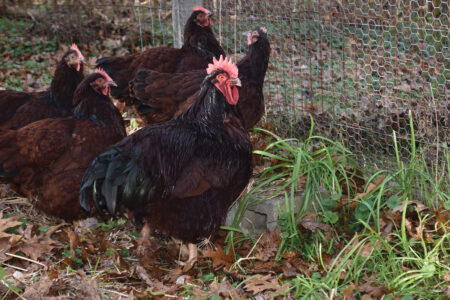The red fox easily adapts to its environment and can be found across the globe.
If you’ve ever seen the red fox in nature, consider yourself lucky. These creatures are cunning, cautious, and learn well from experience, sort of like a domestic pup quickly learns not to get too close to livestock after taking a hoof to the head. Some critters are smarter than others, and the reputed slyness of the fox, specifically the red fox (Vulpes vulpes), has served it well.
The red fox is among the most widespread predators on the planet. This species is found in northern Africa, most of Asia, throughout Europe (including Ireland and Britain), and across most of North America from Alaska to Mexico. Red foxes also inhabit most of Australia, having been introduced in the 1870s by English settlers who wanted to enjoy fox hunting. The animal’s wide distribution is attributable to its ability to adapt to a wide range of habitats, from cold northern forests to hot southern swamps, deserts, prairies, farmland, well-manicured suburbs, and even occasionally the heart of cities.
Red Fox Variations and Appearance
The red fox gets its name from the fact that most have reddish-orange fur on their bodies, heads, and tails. The lower legs are usually black (sometimes known as “socks”), as are the backs of their ears and parts of their muzzles. The tip of the tail is white, as is the throat and belly.
A couple of other color phases, or variations, are found in this species as well. The melanistic phase is completely black, the silver phase (highly prized for its fur) has black fur with white tips, and the cross phase is red with black across the shoulders.
The cross phase is common in Europe and is often seen in North American foxes, probably because European foxes were introduced to North America some time in the 1700s for hunting purposes. The silver phase and cross phase are rarely seen south of Canada.
The red fox has five toes on its front paws — four in contact with the ground and a dewclaw on the back of each front leg — and it has four toes on the back paws, no dewclaws.
The size of red foxes varies from area to area, although those in northern areas are typically larger than those in southern parts of their range. North American foxes range in weight from 8 to 15 pounds, with the females, called vixens, usually weighing slightly less than the males, called dog foxes. On average, red foxes are around 3 feet long, about one third of which is tail. Once again, males are typically a little larger than females.

In North America, red foxes are currently divided into two major groups, called “clades,” based on their genetics. The Holarctic clade includes foxes in Alaska and western Canada, which are genetically similar to foxes from Europe and Asia. The Nearctic clade consists of foxes that are genetically unique to North America. Among the North American foxes, one subspecies is found in higher elevations of the western United States — in some cases, 6,000 feet above sea level — that appears to be adapted to these alpine areas, rarely ventures out of the areas, and does not appear to mix with its relatives from lower elevations. Another subspecies is found exclusively in California’s Sacramento Valley.
Habits and habitats
Red foxes are not particular about what they eat or where they live. Out in the wild, their diet consists of insects, birds and their eggs, and small mammals like rabbits and mice. These foxes also appear to have a fondness for earthworms, fruits, and vegetables. They will eat carrion or raid trash cans when the opportunity presents itself. Foxes living near farms are not averse to preying on small livestock, such as poultry and young lambs.
Red foxes are crepuscular, meaning they are most active around dawn and dusk. While normally inactive during daylight hours, they often come out on cloudy days. Hunting for food occupies much of the red fox’s time.

The red fox has developed several distinctive hunting behaviors, many of which more resemble cats than other members of the dog family. Foxes do not usually pursue their prey like wolves and coyotes, but stalk it like cats. They use their front paws to capture and pin prey, and they kill with a piercing bite of their long thin canine teeth instead of shaking their prey violently like most other canines. When hunting small rodents, foxes use a technique known as “mousing.” This approach involves locating prey by listening, then pouncing by leaping high into the air, steering with their tails, and landing on their victim many feet away. Red foxes will kill more prey than they can eat, especially during breeding season. This behavior can be especially costly to owners of poultry or other small livestock when a fox gets into a pen or chicken house.

While foxes live in a wide range of environments, most seem to like a mixture of forest and open areas, such as farms. These areas are ideal for the kinds of prey foxes prefer, such as insects, small mammals and ground-nesting birds. Some of the highest densities of foxes in the United States and Britain are found around farmland interspersed with forests. Increasingly, red foxes are being seen in suburban areas, where they live in vacant lots, parks and cemeteries. In such areas, they thrive on the abundance of mice, rats and household trash.
The red fox usually uses underground dens when raising its young. They will either construct their own dens or utilize those abandoned by other burrowing species, such as woodchucks, badgers and armadillos. Dens are usually constructed in well-drained soils, often on hillsides. Outside of breeding season, foxes prefer to stay in the open, bedding down in heavy vegetation.
Family life
Like most members of the dog family, red foxes mature relatively fast, being fully grown and independent around 9 or 10 months of age. Mating times vary with geography and may take place from late
December in the southern part of their range to March in the northern part of their range in the Northern Hemisphere. Red foxes only mate once each year and are monogamous, sometimes mating for life. Both parents help raise the young, called kits. The male fox provides the female with food while she is caring for the kits, but he does not enter the den.
The gestation period for red foxes is 52 to 53 days long, and up to 10 kits may be born, although the average is closer to five. Frequently, a female from the previous year’s litter, known as a “helper fox,” will assist in feeding the kits. This delay in having her own young is a strategy that helps ensure greater survival of her family line.
Kits are nursed by the mother for six to eight weeks. After that, they are fed a diet of regurgitated food by both parents and the helper until they are old enough to start learning to hunt.
Foxes like to have their litters in the safety of underground dens, and the same den may be used by several generations.
Fox kits are blind and helpless at birth, and do not open their eyes until they are almost 2 weeks old. Red fox kits are dark brown or black at birth, with the tips of their tails exhibiting the distinctive white tip, just like adults. The red fur will not come in until they are much older. The kits will begin leaving the den when they are about 4 or 5 weeks old. They will remain with their parents until autumn, when they reach sexual maturity and disperse.
A fox’s life
In the wild, most red foxes only live around three or four years, although some live as long as nine years. Some studies indicate that half of all kits in a litter will not make it past 1 or 2 years of age. This is especially true in areas where red foxes are heavily hunted and trapped, or where they live near heavily traveled highways. Once grown, the only major predators of foxes are humans, domestic dogs, coyotes and wolves. In captivity, red foxes can live up to 12 years. Wild red foxes are susceptible to many of the same diseases as domestic dogs, such as rabies, distemper and infectious canine hepatitis.

Humans have hunted and trapped red foxes for their luxurious fur since the Stone Age. Eventually people learned to raise them in captivity, and now most fox furs come from fur farms. The first red fox fur farm in North America was started in Canada in 1895. While real fur has gone out of vogue in many parts of the world, red foxes, especially the silver variety, are still raised in many areas, and wild foxes are still trapped and hunted. In Australia, where red foxes are an invasive species, extensive environmental damage has resulted from the animals preying on native wildlife, and considerable effort goes into controlling their populations.
The red fox is a remarkable part of our wildlife heritage. They have adapted to an astonishing variety of habitats throughout the world and can subsist on a wide variety of foods. In a time when so many native species are declining, the red fox appears to be thriving throughout most of its range. While they can become agricultural pests or serve as a source of rabies, all in all, the red fox is a species to be admired and enjoyed.

Read more: Learn about interesting wildlife in Mountain Lions Are Roaming The Country
John Marshall lives in Benton, Arkansas, and enjoys studying Mother Nature’s most interesting creatures.







